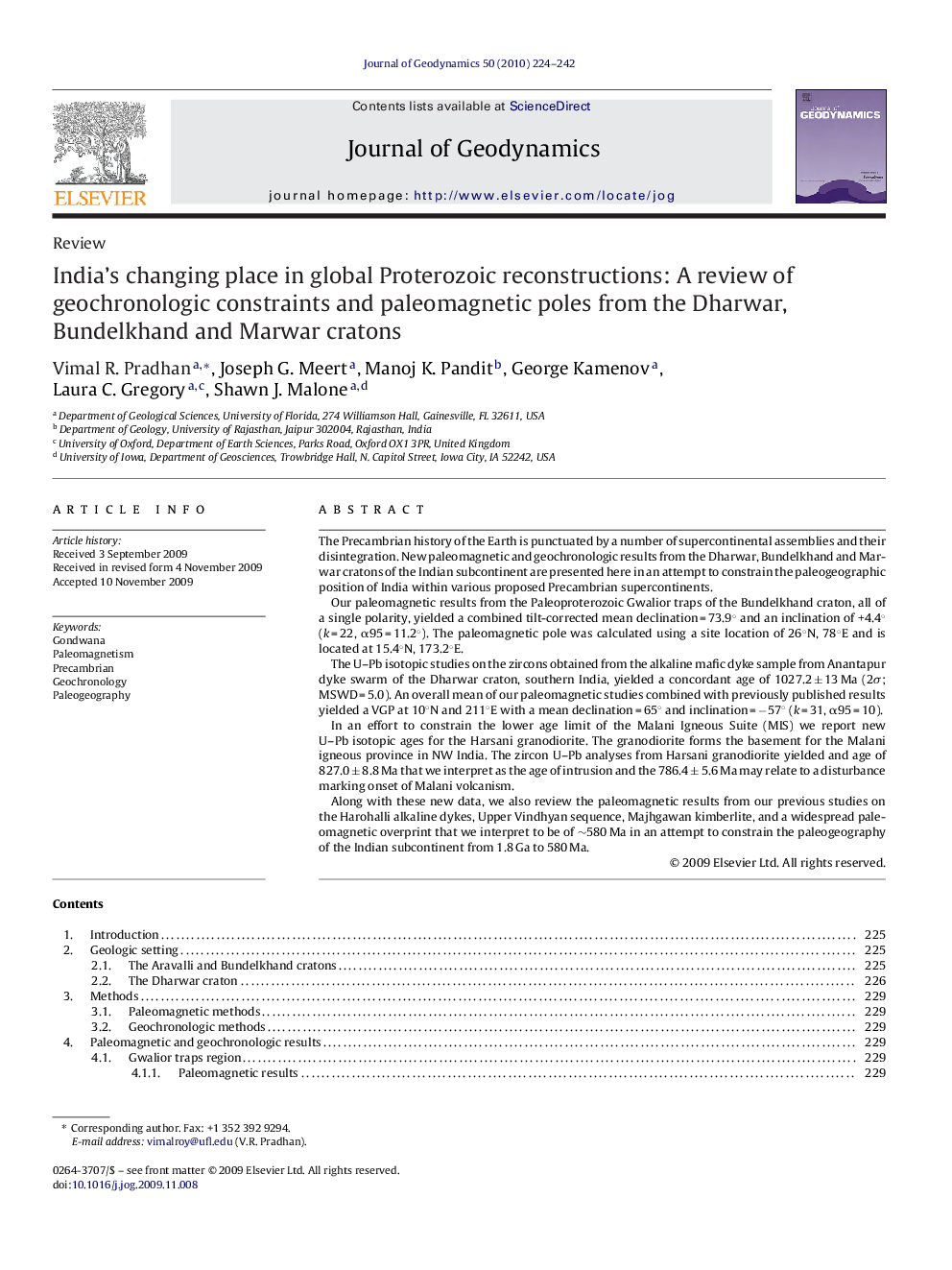| کد مقاله | کد نشریه | سال انتشار | مقاله انگلیسی | نسخه تمام متن |
|---|---|---|---|---|
| 4688534 | 1635798 | 2010 | 19 صفحه PDF | دانلود رایگان |

The Precambrian history of the Earth is punctuated by a number of supercontinental assemblies and their disintegration. New paleomagnetic and geochronologic results from the Dharwar, Bundelkhand and Marwar cratons of the Indian subcontinent are presented here in an attempt to constrain the paleogeographic position of India within various proposed Precambrian supercontinents.Our paleomagnetic results from the Paleoproterozoic Gwalior traps of the Bundelkhand craton, all of a single polarity, yielded a combined tilt-corrected mean declination = 73.9° and an inclination of +4.4° (k = 22, α95 = 11.2°). The paleomagnetic pole was calculated using a site location of 26°N, 78°E and is located at 15.4°N, 173.2°E.The U–Pb isotopic studies on the zircons obtained from the alkaline mafic dyke sample from Anantapur dyke swarm of the Dharwar craton, southern India, yielded a concordant age of 1027.2 ± 13 Ma (2σ; MSWD = 5.0). An overall mean of our paleomagnetic studies combined with previously published results yielded a VGP at 10°N and 211°E with a mean declination = 65° and inclination = −57° (k = 31, α95 = 10).In an effort to constrain the lower age limit of the Malani Igneous Suite (MIS) we report new U–Pb isotopic ages for the Harsani granodiorite. The granodiorite forms the basement for the Malani igneous province in NW India. The zircon U–Pb analyses from Harsani granodiorite yielded and age of 827.0 ± 8.8 Ma that we interpret as the age of intrusion and the 786.4 ± 5.6 Ma may relate to a disturbance marking onset of Malani volcanism.Along with these new data, we also review the paleomagnetic results from our previous studies on the Harohalli alkaline dykes, Upper Vindhyan sequence, Majhgawan kimberlite, and a widespread paleomagnetic overprint that we interpret to be of ∼580 Ma in an attempt to constrain the paleogeography of the Indian subcontinent from 1.8 Ga to 580 Ma.
Journal: Journal of Geodynamics - Volume 50, Issues 3–4, September 2010, Pages 224–242